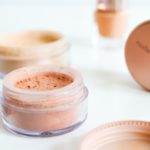Effects of UV rays on the skin – what effect does the Sun have on our skin?
We often hear the term “ultraviolet or UV rays from the Sun” in commercials but there are actually different types of UV rays and their effects vary. UV-A penetrates skin most deeply and causes photoaging. UV-B is the most dangerous during mid-day and may cause skin cancer. UV-C is the most carcinogenic but luckily it is filtered by the ozone layer. All those UV rays come from the Sun. Luckily, probably the most popular effects that the Sun can have on our skin are sunburn and tanning.
Sunburn
Sunburn is an acute inflammatory reaction of the skin after exposure to the Sun for a significant length of time. The effect starts within 4 to 6 hours, peaks at 24 hours, and subsides within 72 hours. However, this may vary from person to person. Sunburn manifests itself with painful reddish skin. Inflammatory cells and mediators are gathered in the area of the skin exposed to the sun, causing redness.
Sunburn is due to ultraviolet radiation, particularly ultraviolet B rays. Ultraviolet damages the DNA of keratinocytes – the main cells of the skin – resulting in their death.
A cool compress or a cool bath can relieve the symptoms of minor sunburn. Analgesics and non-steroidal anti-inflammatory drugs are recommended for pain and inflammation.
Tanning
Tanning is the visible pigmentation of the skin brought about by sun exposure.
Melanocytes are cells that can be found in the bottom layer of the skin. They synthesize melanin which is the insoluble pigment responsible for the color of the skin. Melanin is stored in melanosomes which are transported and distributed to keratinocytes, contributing to skin pigmentation.
Tanning is brought about by the enhanced release of preformed melanosomes into keratinocytes. It is also due to the increased production of the pigment melanin.
Sunburn and tanning are caused by acute or short-term exposure to the sun. For example, Caucasians are more prone to getting a sunburn than to getting a tan, while Asians are more likely to get a tan.
Photoaging
Apart from these short-term effects, there are also other skin changes caused by chronic or cumulative exposure to the Sun called photoaging. The skin appears “older”, with a dry, leathery feel, coarse and fine wrinkles, loss of elasticity, and a sickly color. Chronic sun exposure can also lead to skin tumors.
The skin composition and the amount of sun exposure are those factors that affect the degree of sun damage.
Fair-skinned individuals have a type of melanin called phaeomelanin, which is less protective from the harmful radiation of the Sun, making them more prone to the occurrence of skin cancer. On the other hand, darker-skinned individuals have eumelanin, which is a more protective pigment. The number of melanocytes – cells that produce the pigment melanin – is equal in all skin types. What differs is the type of pigment produced. Dark skin color is beneficial because it serves to protect the body against damage because of ultraviolet radiation.
The amount of sun exposure pertains to the duration and intensity of exposure. Location and latitude is also a factor. People living in higher altitudes are threatened to higher risk because they are closer to the Sun. Countries in the tropics with hot climates are exposed to greater risk as well. The time of the year is important as well – people should be more careful during summer. Moreover, a fair-skinned individual visiting the tropics for a summer adventure at the beach during noon time is at higher risk than local men doing the same.
Sun benefits
Despite all the drawbacks, we have to remember that our body gets a lot of benefits from sunlight and UV rays as well. Ultraviolet radiation from the Sun promotes the synthesis of vitamin D in the skin. Vitamin D is essential to balance the distribution of calcium in our body and for the health of bones and has a very positive effect on our organism(also, you can check information about Vitamin E).
Studies showed that the best time to enjoy the Sun is from 8 am until 10 am or after 5 pm. It is advisable to avoid being outside from 11 am until 4 pm when the Sun is at its zenith, the rays are closer and directly hit the surface of the Earth. Using umbrellas and sunglasses during sunny days is a cheap and effective preventive method. It is also recommended to use sunscreen with a UV-B rays filter before having fun on the beach or at any sunny place. Sun exposure is not entirely harmful. The ability to balance the amount of sunlight we are exposed to is the key.




























